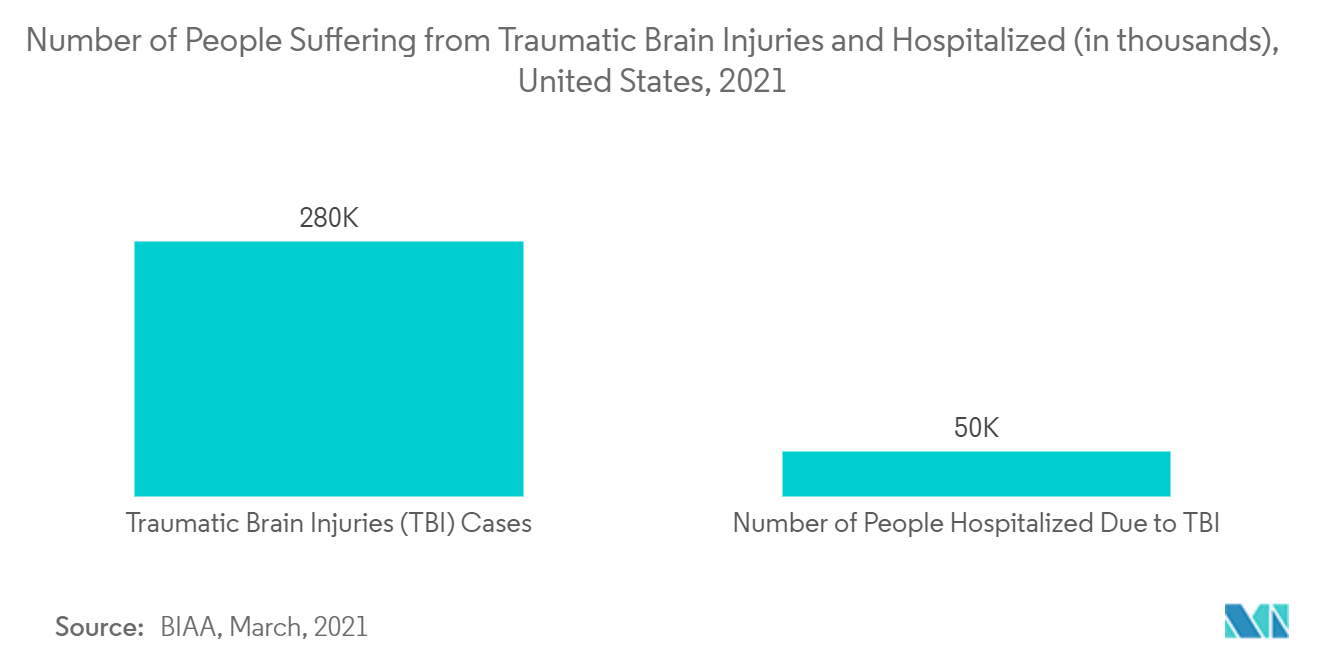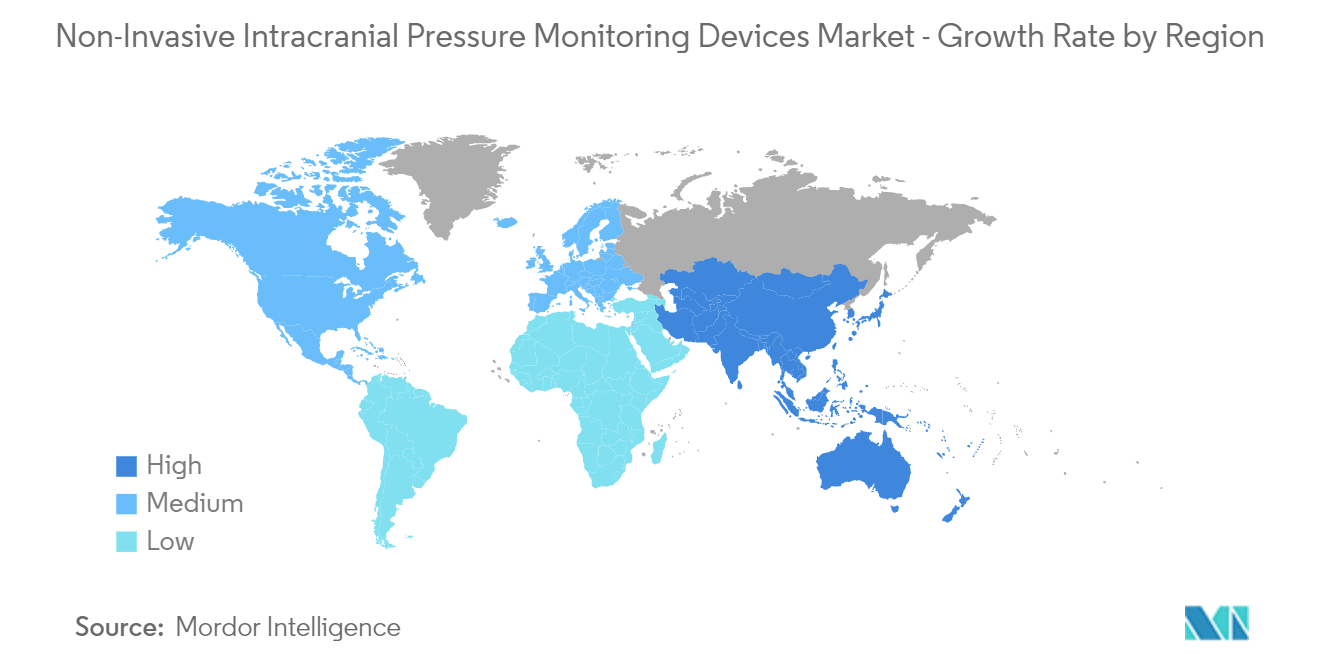Market Trends of Non-Invasive Intracranial Pressure Monitoring Devices Industry
This section covers the major market trends shaping the Non-Invasive Intracranial Pressure Monitoring Devices Market according to our research experts:
MRI/CT Segment is Expected to Witness Largest Growth Over the Forecast Period
MRI/CT is expected to dominate the global non-invasive intracranial pressure monitoring devices market through the forecast period. Computed tomography (CT) combines a series of X-ray images taken from different angles. They are processed to provide cross-sections and three-dimensional volumes of the patient's interior. Magnetic resonance imaging (MRI) is a type of medical imaging used to examine almost any body part. MRI can help diagnose a variety of medical conditions, from concussions to cancer, or assess how well current treatments are working and plan future treatments. The increasing use of MRI is one of the major factors for the segment to attain the largest growth over the forecast period.
An increasing number of cases of neurological disorders are yet another factor driving the segment's growth. The growth can be attributed to wide adoption and several benefits such as faster results, safer, easy use, and good quality images with high contrast between pathologic and normal tissues. For instance, according to a report published by the BIAA, more than 3.5 million people in the United States suffer from traumatic brain injuries every year. Similarly, a report published by the Indian Head Injury Foundation in April 2021 found that more than 50.0 million suffer from traumatic brain injuries every year across the globe.
Furthermore, per the JSPRM journal of September 2021 and our analysis, around 69.0 million individuals suffer from traumatic brain injury per year. Since MRI is one of the essential requirements for a diagnosis of traumatic brain injuries, increasing cases of traumatic brain injuries are anticipated to propel the segment growth over the forecast period.
The introduction of technologically advanced products and services and increased research work related to neurological disorders are also expected to surge segment growth. For instance, in March 2021, Royal Philips launched MR imaging at the annual meeting of the Radiological Society of North America (RSNA). Philips' new MR portfolio of intelligent integrated solutions is designed to accelerate the MR exams, streamline workflows and optimize diagnostic quality. Similarly, in October 2022, GE Healthcare launched Omni Legend PET/CT System at EANM Congress. The inclusion of digital bismuth germanate (BGO) detector material in the product with the Omni Legend system has reported double sensitivity than older PET/CT devices. The new device also offers improved scanning time and enhances the detection of small lesions. The product will be primarily used for oncology, cardiac, and neurological disorders imaging purposes.

North America is Expected to Witness Significant Growth Over the Forecast Period
North America is expected to dominate the overall non-invasive intracranial pressure monitoring devices market over the forecast period. The growth is due to factors such as the rising cases of neurological disorders, technological advancements, and the presence of many key players in the region. According to a report published by the CDC in March 2022, more than 611 traumatic brain injuries-related hospitalizations and 176 traumatic brain injuries-related deaths per day were reported in 2021. Such instances indicate that the demand for non-invasive intracranial pressure monitoring devices may increase, propelling market growth in the North American region.
Key product launches, high concentration of market players or manufacturer's presence, acquisition and partnerships among major players, and increased research related to neurological disorders in the United States are some of the factors driving the growth of the non-invasive intracranial pressure monitoring devices market in the country. For instance, in January 2022, Cleveland Clinic launched a brain study to diagnose and prevent neurological diseases before symptoms occur. This new Cleveland Clinic Brain Study will collect data from up to 200,000 neurologically healthy individuals over 20 years to identify brain disease biomarkers and targets for preventing and curing neurological disorders.


